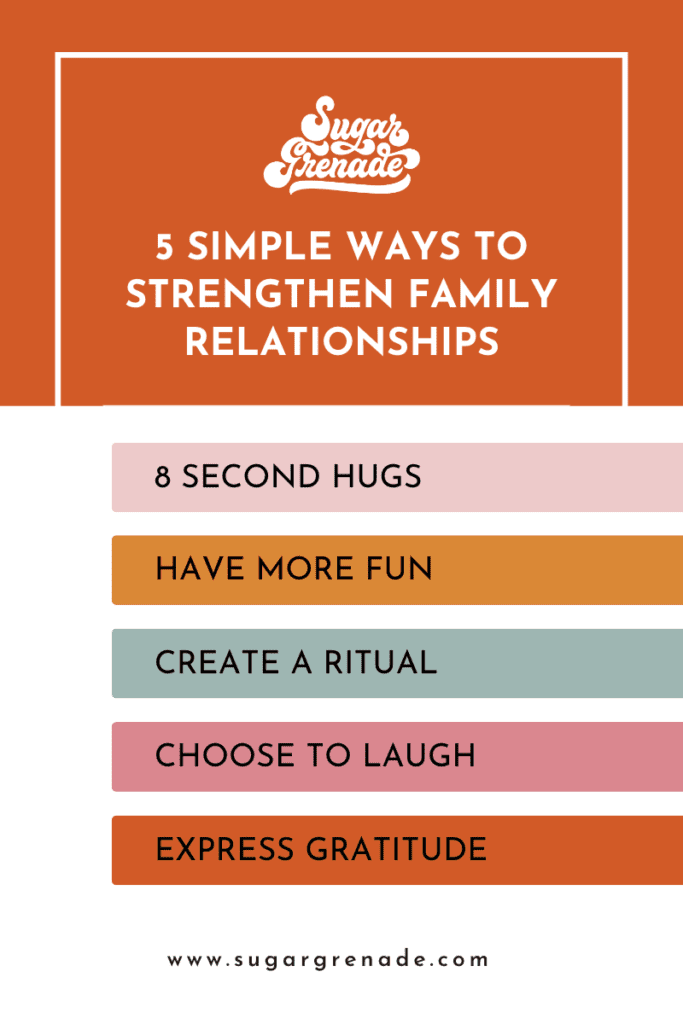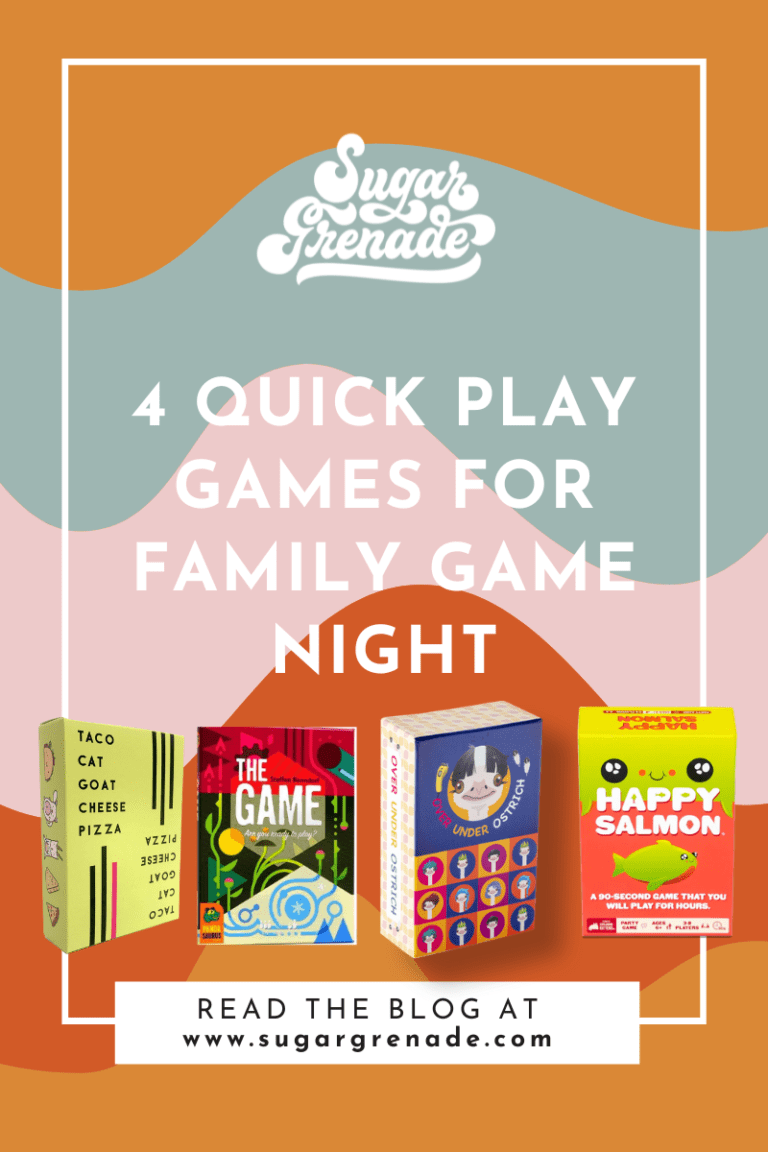5 simple ways to strengthen your family relationships
How to strengthen our family relationships is something we regularly revisit. Kids change quickly along with routines, schedules, interests, and needs. Ultimately, fulfilling their needs is our goal. When something starts to feel “off” in our home, we make sure the basic needs of the individuals in our home are being met.
A little backstory for you: it took us 7 years to have our first baby. During that time, we talked about the kind of parents we wanted to be when the time came. Those years we spent alone together are now something we see as a huge blessing, despite how difficult it was to go through 7 years of infertility. Now we’re a homeschool family of 4. In other words, we spend a lot of time at home, in each other’s space, and getting to know each other very personally, not entirely by choice a lot of the time.
We are by no means experts, but we are very focused on balance within our home. These are our tried and tested solutions to help us stay on track. Usually, when there’s stress within our ecosystem, one of these areas needs a little extra attention.
8 Second Hugs to strengthen family relationships
Let’s jump right in with physical affection. I am not naturally inclined to hug people, but I can’t argue with the facts.
“We need 4 hugs a day for survival. We need 8 hugs a day for maintenance. We need 12 hugs a day for growth.”
Virginia Satir, world-renowned family therapist
Hugs are scientifically proven to benefit heart health and mental health. They reduce stress, promote muscle regeneration, and strengthen your immune system. A decrease in cortisol (stress hormone) and elevation of oxytocin (the “love drug” hormone), dopamine (feeling of reward), and serotonin (the happy hormone) are only a few of the results of a good old hug.
Further, if you live with children or have access to nieces and nephews or grandkids, make the most of it! Hugging hugely benefits both parties. In the modern home, taking time out for extended hugs means disconnecting from screens for a moment and prioritizing physical touch and human contact. After all, what can be more important than that?
Whether for comfort, stress relief, bonding, or just because you like the warmth of another being in your arms, hugging should be a bigger part of all our days! Be the last one to let go, and see what happens.
Have more fun together
The daily grind can distract from relaxation or a sense of togetherness. Simply put, take time out together to have fun. The fun you create doesn’t have to cost anything and doesn’t need to be scheduled – unless it helps. Switch off the tv and pull out a game to play. Perhaps do a jigsaw puzzle together. Read that bedtime story. Break the routine. If the change feels difficult to adopt, start somewhere simple, for example, coloring together for 5 minutes. Do you know the health benefits of coloring?
At the end of the day there should be something specifically enjoyable should come to mind for everyone. If these instances are lacking, don’t panic.
Create a ritual to bond over
We have a handful of little rituals that we’re constantly working on. Sometimes, we’re on the ball, and other times, a few slip through the cracks. That’s life! We re-evaluate and adapt as needed, but a simple fix for our family is eating dinner at the table together. At the table, whether we’re eating a homecooked meal, a quick dinner, or take away, some interactions don’t happen otherwise. Really though, you have to eat, they have to eat; share a meal together, that’s the important part.
For example, outside of sharing a meal, you could pair socks together, walk around the neighborhood together, read a book together, exchange love notes, or watch a movie together every Saturday night. Our girls have a bedtime ritual we’ve learned to depend on. Whoever is ready and in bed first gets to pick the Calm story they listen to as they drift off to sleep.
These traditions you create, create a sense of belonging, family culture, and values. Then, these practices can be passed down through generations in some form. Additionally, you probably have some you’ve adopted or can identify from your own upbringing. Those are worth exploring. Togetherness is the goal.
Choose to laugh
Life is stressful, and we’re all trying our best. Hence, we collect stress throughout our day and have to figure out what to do with it. As a result, we bring it home from running errands, from the carpool lane, from our workplace, and the kids bring it home from school, too. There isn’t any way around that. Next, we combine our stress as we gather together at the end of the day. Getting to bedtime without hurting each other’s feelings can be hard! Home is our safe place, where we begin and end our day. It’s also where stress collects, and we feel comfortable expressing our frustrations. Here’s the thing: although stressed, we have a choice in how we respond, especially in our home, with our precious families.
You can choose to laugh.
Laughter creates distance between you and your stress. It shifts perspective and diffuses that heavy feeling of overwhelm. Undoubtedly, it’s a skill we should all be aware of and pass on to our kids. Instead of being angry or lashing out, you choose to laugh. That ridiculous thing you’ve witnessed probably has an element of humor you can identify if you take the split second not to fly off the handle. The human doing the thing about to set you off probably isn’t doing it because they want you to put them in time out., despite how it feels.
Choose your battle, and create a new habit.
Find the funny, laugh together, and redirect the nonsense. Bond.
Express Gratitude
We have one child who falls into a habit of negative self-talk that, simply put, scares the life out of me. Hearing the narrative, she feeds herself when she doesn’t feel understood, accepted, or loved makes my blood run cold. Short of therapy, we noticed when we focus on expressing gratitude, we don’t hear much negativity from anyone. She now leads our daily family gratitude practice. If we each at the dinner table (ritual), we each express three things we’re grateful for and thank one person at the table for something they’ve done that day.
Hearing specifically what each family member is grateful for creates conversation and a bond.
A study of couples found that individuals who took time to express gratitude for their partner not only felt more positive toward the other person but also felt more comfortable expressing concerns about their relationship.
Giving Thanks Can Make you Happier – Harvard Health
Expressing gratitude helps you feel safe expressing concerns in the long run. I want that kind of trust in my relationship with my kids.
There you have it! A few ideas to help create balance and joy in your home with your family. Hopefully, you find something helpful here, especially if stronger family relationships are part of your goals for this year.











